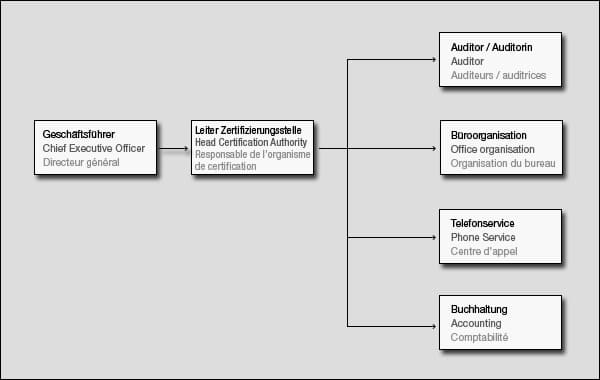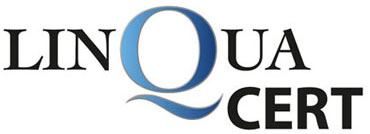The certification body organizes all aspects of the LinquaCert Quality Management System based on the international accreditation standard ISO / IEC 17021. The certification body guarantees impartiality in the implementation of certification activities and eliminates potential conflicts of interest.
Structure and roles are documented in a process model. Functions with tasks, responsibilities and authorities of the management and certification staff are clearly assigned.

You can reach us by phone on +41 44 552 66 19 or send an email to Mr. Markus Kukla, head of the certification body. We look forward to hearing from you!
The certification body is the focus
Central to the structure of a company like ours that conducts certifications is the certification body. It must be integrated into the organization at a very specific point in order to guarantee the greatest possible transparency and independence. This position sits between senior management and the other organizational areas.
While the company management deals with strategic and financial matters, the certification body focuses on checking certificates and audits. The leadership of this body should take a neutral position. The main task is quality assurance. It ensures that the processes described in accordance with ISO 17021 are adhered to.
The certification body is superior to the auditors and other units of a company in the field of management system certification. She is only accountable to management.

The specifications of ISO 17021
ISO 17021 requires that the tasks, competencies and areas of responsibility of the certification body are precisely defined and set out. We can prove at any time which authorizations are assigned to which positions and how these are integrated into the certification processes.
Each time we certify a translation service provider, we follow a defined procedure that is ISO-compliant. The internal structure of LinquaCert is based on these standard specifications.
Our process model makes it clear what the internal processes are like in a certification process. Each step is documented there, and in the process itself it must be proven that this process step has actually been completed. This goes far beyond a checklist: At LinquaCert, we are guided by modern, international processes and structures when evaluating management systems.
Certification of a management system and underlying structure provides independent evidence that the organization's management system:
- Meets the specified requirements;
- Is able to consistently apply its rules and requirements;
- Achieve the set goals.
At LinquaCert we meet these requirements and have set up the necessary organizational structures to comply with this international standard. With the certification body, we have set up a level that not only serves to control quality, but also to guarantee that there are no conflicts of interest.
